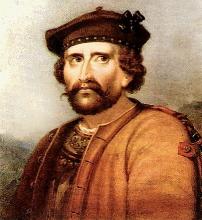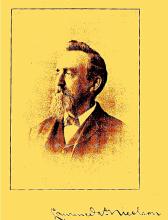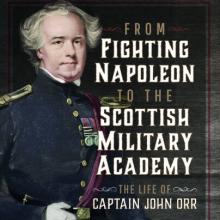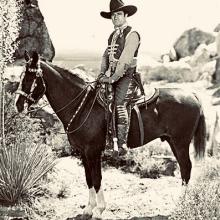
Cowboys, fists and a monster smoking concert
We saw last week how, in the continued absence of large-scale commercial exhibitions, Edinburgh's first purpose-built exhibition hall on Annandale Street was struggling to justify its existence.
Sporting fixtures, dances and pageants on roller skates were all very well. ‘Sacred concerts’ and charity benefits created good publicity and raised the tone. But where was the money to come from?
The Industrial Hall management increasingly turned to popular entertainments, in contravention of the terms of its original agreement with the Town Council.
In late September there appeared Hengler’s World-Famous Circus: ‘Beautiful Horses and Ponies—Wonderful Riders—Merry Clowns—Marvellous Gymnasts and Acrobats—the new Cowboy Scena, “Holiday in Texas,” in which 40 performers and horses take part.’
This was to be one of the last performances of the Glasgow-based Hengler’s Circus, but the Scotsman’s report of 23 September 1924 gives no indication of any decline in standards:
There are eighteen ‘turns,’ clowns, ponies, bareback riders, acrobats, performing dogs, jugglers, conjurers, and cowboys flash before audience in rapid succession, and the whole show moves with a delightful swing.
[…] There is an all-round standard of excellence in the programme, but one of the outstanding performances is that of the Lio Hoi Tsehn Troupe in a “Chinese novelty act,” which fully justifies its name. The male leader of the troupe strikes one as a dangerous person to have near an ammunition dump, for he breathes forth smoke and flames, and with apparent relish consumes large quantities of burning paper.
The equestrian feats are splendidly carried through and a band supplies lively musical accompaniments.
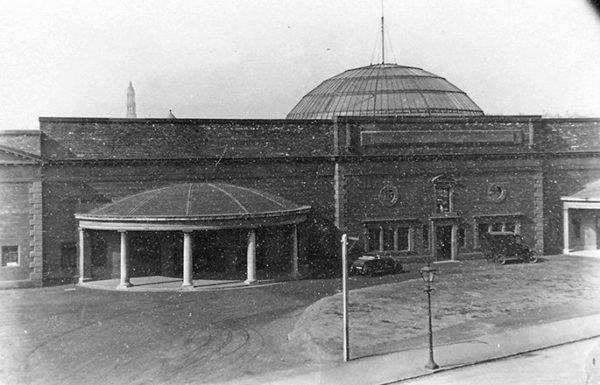
[Image courtesy of Lothian Buses.]
The Scottish National Fat Stock Club’s sale of Fat cattle, sheep, pigs, roots, grain and potatoes was scheduled for 3–4 December but was not expected to draw in the crowds. That function instead fell to the good old blood-and-thunder spectacle of grown men knocking seven bells out of each other.
On 26 November, Kid Lewis of London took on Tommy Milligan of Hamilton, the Scottish welter weight champion, in a fight for the championship of Great Britain and Europe.
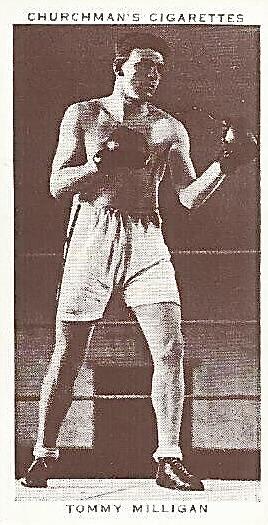
Milligan won over 20 rounds in front of a 20,000-strong audience. His opponent, who lost on points, was apparently well-beaten. However, what passed outside the ring was for some of as much interest as the blows within. The Edinburgh Evening News reported next morning:
BIG FIGHT SCENES.
AN UGLY INCIDENT.
POLICE DRAW THEIR BATONS.
Prior to the big fight in the Industrial Hall, Annandale Street, Edinburgh last night, an ugly incident occurred which caused some anxious moments for the contingent of police on duty outside the hall.
From a comparatively early hour in the evening there was a great demand for admission to the 2s 4d seats, the queue stretching right up Annandale Street, and being continuously added to.
The trouble originated with the arrival of large numbers of men from outlying districts by training and ‘bus. These enthusiasts appeared to disregard the queue and to make straight for the hall. Finding the way barred against immediate admission, they attempted to join the queue.
RUSHING THE DOORS.
This caused considerable crowding on the ground in front of the hall, and as those who had previously been in the queue took exception to the action of the newcomers, matters became somewhat serious.
Eventually the crowd got out of hand and there was a rush in the direction of the admission door.
Realising that the situation called for firm handling, the police drew batons, a course which had a salutary effect upon the unruly ones, who immediately fell back.
The incident fortunately lasted only a few minutes, thanks mainly to the prompt action of the constables. No casualties occurred, but a number of persons gained free entrance to the hall in the course of the rush.
Extra police arrived on the scene subsequently, and the crowd remained a perfectly orderly one for the remainder of the night.
A different Evening News correspondent noted elsewhere in the paper the Industrial Hall's distinctive atmosphere on the night.
Inside, it was for the moment difficult to distinguish anything. Some folks were asking for their money back, others were fruitlessly looking for any little niche commanding a view of the fight platform. It seemed amazing that order was being kept, but such was the case—good order, too, else one’s press badge would have been a useless bauble.
In one respect the building seemed the setting for a monster smoking concert. The atmosphere was impregnated with a fog that was partly tobacco smoke, in part autumnal mist that had stolen in from outside.
It gave the place a spectral appearance. On the far side of the building from the press benches rose tiers of seats, closely packed, the faces of their occupants faintly discernible through the gloom.
As Christmas beckoned, the World’s Fair and Carnival returned in December 1924 with
[…] roundabouts, side shows of great variety (from the modern version of the old Pepper’s Ghost illusion to the midgets and the fat lady).
Attractions include helter skelter, cake walk, or joy wheel.
Continental illusionists, Sydney de Hempsey and Rosita Dennis, whose act included cutting a lady in half.
Comedy gymnasts, hoops manipulator, trick cyclists, and knockabouts, clever wire act.
Had the Industrial Hall finally emerged from the financial doldrums? Would commercial exhibitors at last return to Annandale Street in the spring of 1925? Find out in our next article on this subject which will appear here on 12 September.
For previous coverage see:
